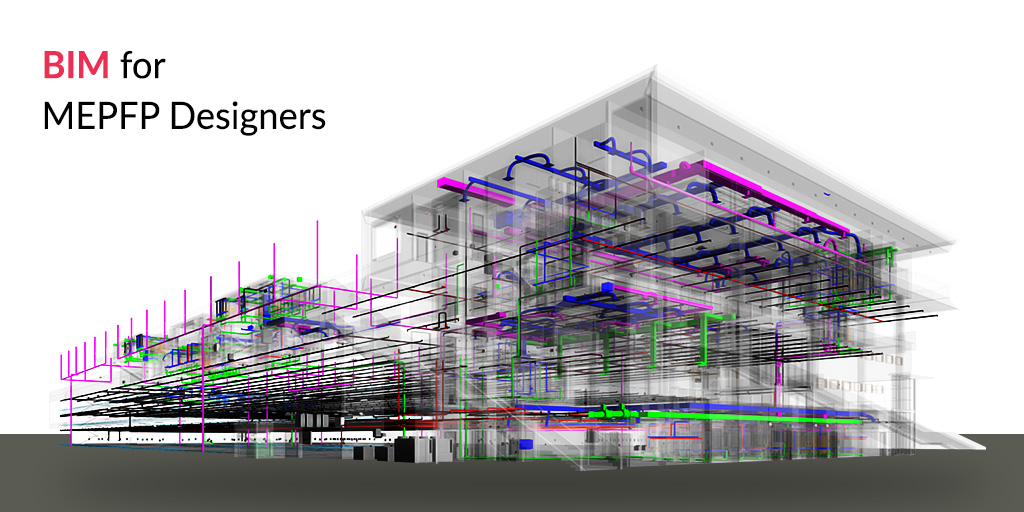
BIM for MEP-FP Designers
Automation of business processes is a reality in the modern world. Every corporate activity is slowly but surely becoming digital, and data is used to inform every decision. Digitalization must be used to increase efficiency across the board in the AEC community and even on building sites.
Building Information Modeling (BIM) technology has made significant strides in the AEC industry’s ongoing evolution (BIM). It is used to efficiently use the resources—time, materials, manpower, etc.—and collaborate and coordinate with each project stakeholder—architects, structural engineers, MEPFP engineers, contractors, subcontractors, owners, etc.—to ensure that there are few changes made during construction and that everything goes according to plan.
1. Design
2. Procurement
3. Construction
4. Facility Management
Every stakeholder has a part to play in the design of a building, thus there needs to be an effective way of collaboration and a desire to work together toward a common objective. A fun fact is that 92% of the building information is unavailable when the designs are being created.
This causes a great deal of ignorance and may cause instructions to change (COs). Change orders typically account for 10% of a project’s cost on average. The entire project delivery is delayed as a result of these changes in order. 30% of projects fail to finish by the original deadline and budget. Implementing BIM can change this.
BIM can help in reducing the wastage of resources by 37 percent. A few of the commonly known benefits that BIM brings in construction are:
- 3D representation
- Quantity take-off based on the 3D BIM model
BIM is a clever, 3D model-based approach that aids MEPFP professionals in more effectively designing, detailing, documenting, and fabricating building systems. BIM helps project teams collaborate better, share data more quickly, and deliver projects more quickly from conception to completion.
Working in a BIM process allows MEPFP project teams to increase accuracy, minimise clashes, and optimise the design of building systems. It also gives them insight into design and constructability.
BIM is crucial for Mechanical, Electrical, and Plumbing Engineers/Designers on all levels. BIM includes two key components for MEPFP design: [1] Intelligent BIM and [2] Digital Engineering.
Digital Engineering
Designing MEPFP with digital engineering The BIM model is data-driven and model-based. It will include all the technical and functional information necessary for building product makers to comply with information and data requirements. Additionally, it will use computations and support the creation of data-driven MEPFP designs. BIM facilitates collaboration and data sharing throughout the life cycle of a building in addition to aiding in the creation of an MEPFP model.
Intelligent BIM
BIM brings together all the key players, including MEPFP engineers, owners, product manufacturers, fabricators, and contractors. This is known as intelligent BIM. By employing the model and its data, processes that promote better design are streamlined. It aids in creating models with objects that are data-rich and design automation for coordination that is more efficient and less expensive.
The MEPFP coordination models’ fabrication level gives precise spatial and layout details for a design’s mechanical, electrical, plumbing, and fire protection components. Potential conflicts between these interdisciplinary trades and an architectural design that must work together on a single project will also be identified and illustrated through BIM models.
Benefits of BIM for MEPFP Designers
Using BIM is a huge benefit for MEPFP designers. BIM enables engineers and other building designers, construction managers, and building managers to plan and think all parts of the project in 3D, from the beginning of the plan to the finish and even for the future alteration. CAD software just gives the fundamental documentation of the job.
The 3D BIM model’s information storage makes it simpler for all stakeholders to analyse and work together during the whole construction process. It makes it simple and sustainable to estimate costs, determine energy loads, and design heating, ventilation, and air conditioning (HVAC) systems. visit our website – www.sudarshancadd.com

